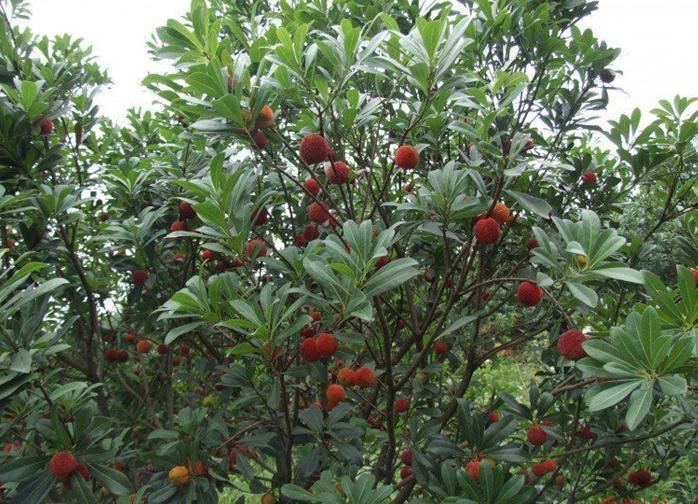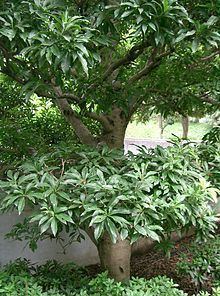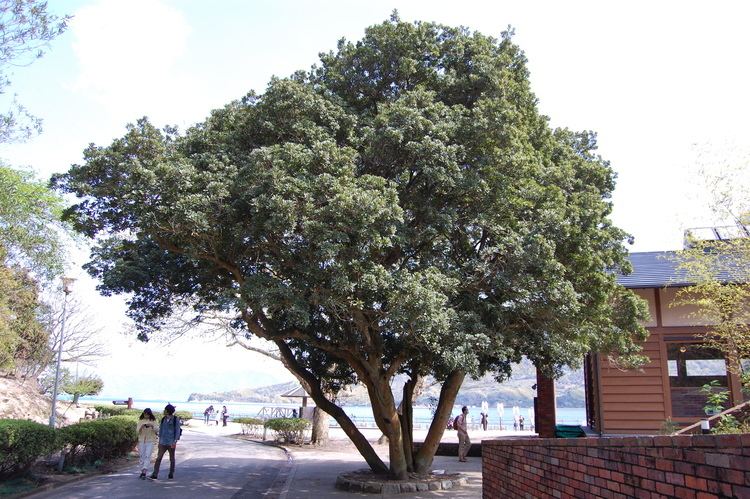Scientific name Morella rubra Rank Species | Higher classification Bayberry | |
 | ||
Similar Loquat, Strawberry tree, Lychee, Plum blossom, Akebia quinata | ||
Myrica rubra strange fruits
Myrica rubra, also called yangmei (Chinese: 杨梅; pinyin: yángméi; Cantonese: yeung4 mui4; Shanghainese: [jɑ̃.mɛ]), yamamomo (Japanese: ヤマモモ, "mountain peach"), Chinese bayberry, Japanese Bayberry, red bayberry, yumberry, waxberry, or Chinese strawberry (and often mistranslated from Chinese as arbutus) is a subtropical tree grown for its sweet, crimson to dark purple-red, edible fruit.
Contents
- Myrica rubra strange fruits
- Cxj type surf style fruit machine wash application in myrica rubra
- Description
- Taxonomy
- Distribution and habitat
- Uses
- Products
- Research and components
- Culture
- References

Cxj type surf style fruit machine wash application in myrica rubra
Description

It is a small to medium-sized evergreen tree growing up to 10–20 m (33–66 ft) high, with smooth gray bark and a uniform spherical to hemispherical crown. It is dioecious, with separate male and female plants. It tolerates poor acidic soils. The root system is 5–60 cm (2.0–23.6 in) deep, with no obvious taproot.
The fruit is spherical, 1.5–2.5 cm (0.59–0.98 in) in diameter, with a knobby surface. The surface color is typically a deep, brilliant red, but may vary from white to purple. The flesh color is similar to surface color, or somewhat lighter. The flesh is sweet and very tart. At the center is a single seed, with a diameter about half that of the whole fruit.
Taxonomy

Also called Morella rubra Lour.; Myrica rubra var. acuminata Nakai. It is usually cited as Myrica rubra (Lour.) Siebold & Zuccarini. However, in their publication of 1846, Siebold & Zuccarini provided a description only, with no reference, direct or indirect, to Morella rubra Lour. (1790). Therefore, the name Myrica rubra Siebold & Zuccarini must be treated as new, preventing the combination in Myrica of Loureiro’s earlier name.
Distribution and habitat

It is native to eastern Asia, mainly in south-central China where it has been grown for at least 2000 years. Chinese cultivation is concentrated south of the Yangtze River, where it is of considerable economic importance. Its niche is forests on mountain slopes and valleys at altitudes of 100–1500 m.
Uses
The tree is used as ornaments for parks and streets. It is also a traditional tree used in composing classical East Asian gardens.
Products
Some cultivars with large fruit, up to 4 cm in diameter, have been developed. Besides fresh consumption, the fruits may be dried, canned, soaked in baijiu (Chinese liquor), or fermented into alcoholic beverages. Dried fruits are often prepared in the manner of dry huamei (Prunus mume with flavorings such as licorice). The juice has been commercialised under the brand name "Yumberry" under which name it is trade-marked in the EU. In Yunnan Province in China, there are two main types of yangmei, a sour type used for making dried fruit and a sweet type used for juice and fresh eating.
Other uses include
Research and components
Various species of Myrica have been studied scientifically for horticultural characteristics or phytochemicals implicated with health benefits. Dating to 1951, the horticultural literature includes studies on
The scientific literature is diverse, with studies of phytochemicals from bark, leaves and fruit. Significant progress has been reported on polyphenols, particularly ellagic acid, prodelphinidin-type tannins, such as prodelphinidin B-2 3,3'-di-O-gallate, and anthocyanins, antioxidant activity, anti-cancer and anti-viral properties. Cyclic diarylheptanoids, such as myricanone glycosides, can be isolated from the bark of M. rubra.
An extract from fruit called myricerone blocks a receptor for the peptide, endothelin, an important mediator of blood vessel constriction, indicating potential for drug development.
Culture
In Japan, it is the prefectural flower of Kōchi and the prefectural tree of Tokushima. The plant's name appears in many old Japanese poems.
